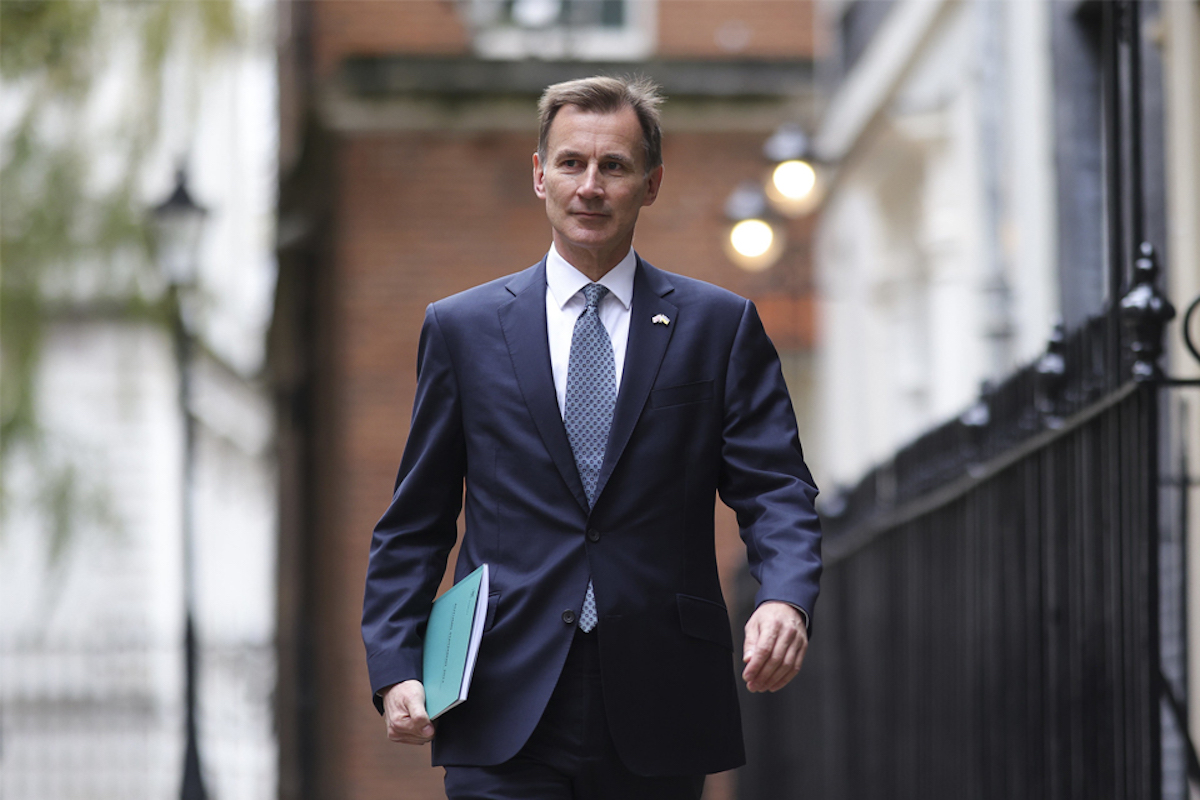Jeremy Hunt has achieved something of a rarity: his Autumn Statement was positively received by the market and commentators. This is a rare success for the current government, but what did it mean for institutional investors?
The infrastructure investment narrative has been something the government has promoted and Hunt cited planning reform as something which will boost infrastructure investment. This appealed to Ted Frith, chief operating officer at GLIL Infrastructure, a £3.6bn local government pension scheme-backed infrastructure investment fund.
“The government’s proposed changes will hopefully deliver more certainty and stability and give investors the confidence they need to support investment in the UK,” Frith said.
But he highlighted that this planning scenario has proved to be an annoyance. “The lack of planning resources has been a source of frustration for infrastructure investment,” he said. “Many developments have faced long delays, and some even lose their investors, depriving the country of the infrastructure upgrade the UK needs to supercharge economic growth.”
More growth
The much-touted government growth agenda was also touched on in Hunt’s statement. The chancellor announced plans to consult on the details of how more defined benefit (DB) pension schemes could invest for growth. As part of this announcement, the treasury indicated that the 35% tax rate on extracted surplus funds will be reduced to 25%.
LCP partner and former pensions minister Steve Webb said the announcement represents a “huge leap forward in plans to allow well-funded DB schemes to invest for growth.”
Although Webb offered a strong caveat: “Provided that member benefits are protected, schemes would be able to build up surplus funds, benefiting existing members, the next generation of pension savers and the sponsoring employer.”
Webb therefore noted that he looked “forward to seeing the consultation on the details” of how the new regime will work.
Nick Gibson, senior director at Cardano, added that the potential impact of the measures “could be significant”.
“For corporate sponsors, the changes could increase opportunities to unlock value from their schemes, and allocate additional capital towards their corporate growth strategies,” Gibson said.
“In that way, the government hopes that this will help to accelerate investment into UK productive finance, recognising that there are many potential uses of the additional capital raised.”
Added risk
But Gibson noted there was the potential for added risk. “From a trustee perspective, it will be important that any additional flexibility introduced around accessing surplus does not increase the risk to the security of member benefits,” he said.
To this end, Gibson welcomed the proposed review of new mechanisms to protect members as part of a consultation into changing surplus rules.
The proposals build on the chancellor’s ‘Mansion House’ speech, made during the summer, where he put forward plans to encourage pension schemes to invest in a way that benefits UK businesses.
In this way, the chancellor also announced that local government pension scheme (LGPS) investment guidance will be revised to implement a 10% allocation ambition for investments in private equity, which is estimated to unlock around £30bn with the aim of increasing consolidation in to LGPS pools.
The chancellor also confirmed a March 2025 deadline for the accelerated consolidation of LGPS assets, setting a direction towards fewer pools exceeding £50bn in assets under management.
Rapid timeline
This is a worry for Nigel Peaple, director policy and advocacy at the PLSA.
“We are also concerned that the government is standing by its rapid timeline for the transfer of assets from pension funds to the asset pools in the LGPS, although it is potentially helpful that this will go forward on a comply or explain basis.”
An additional mention of plans surrounding the LGPS could be found in the accompanied statement documentation which revealed that pools should achieve at least £200bn in size, with a GAD calculation putting LGPS reaching £950bn by 2040, meaning this would mean the eight pools would be reduced to four or five pools.
This brings some uncertainty for the LGPS going forward. Although this date is somewhat distant at the moment, and things could change quickly if, as expected, Labour wins the next election.
The government also announced plans to encourage the consolidation of small defined contribution (DC) pension funds, with a target for most members to be in such an arrangement of £30bn or more by 2030.
The Pension Protection Fund would be the consolidation vehicle for smaller schemes. It should be noted, however, that the smallest 2,000 schemes have less than £20bn of assets between them.
Not a disaster
Focusing in on implications for the bond market, James Lynch, fixed income manager at Aegon Asset Management, said: “In the grand scheme of UK budgets, this was a mild disappointment, but not a disaster for the gilt market.”
The market, he added, was expecting somewhere around the £10bn to £15bn area in cuts to gilt issuance this year but only got £500m taking total gilt sales to £237.3bn.
“Short term, the focus of the gilt market will be the extra auctions that were not expected, medium term it will be the economic fundamentals of GDP, inflation and Bank of England rates that will still be determining the level of gilt yields,” Lynch said. [EN





Comments